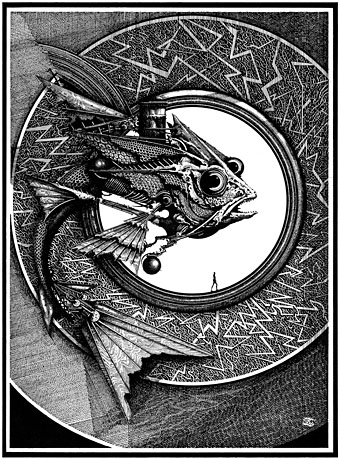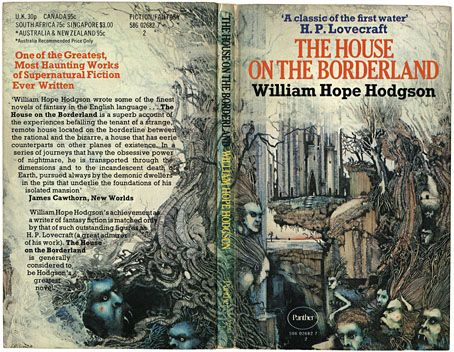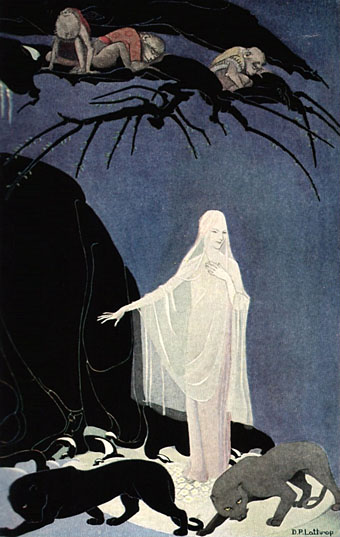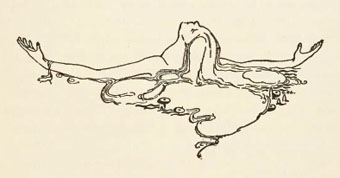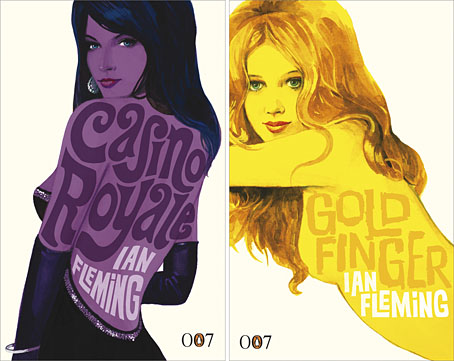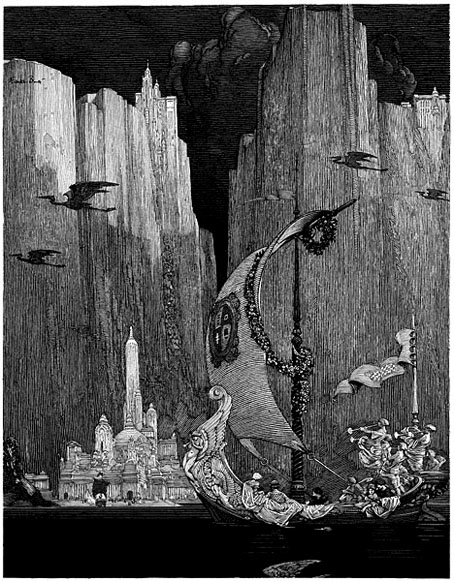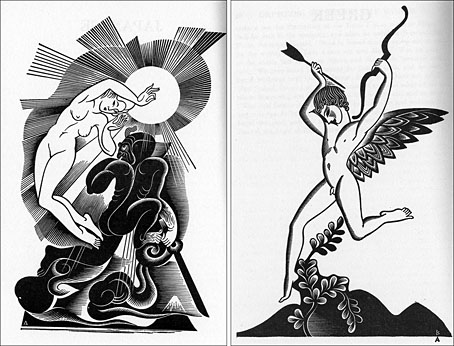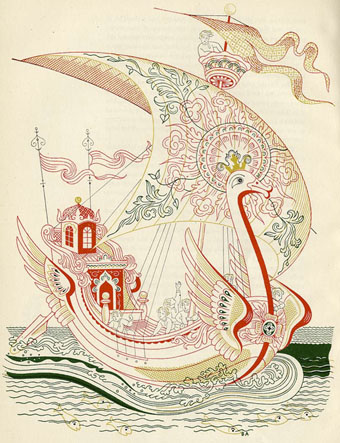From the Hollywood Gothic series (1984).
Jeff VanderMeer has a great post about artist/illustrator Ian Miller at io9 which prompts me to write a few words about his work myself, something I’ve intended for a while.
Miller is indelibly linked for me with HP Lovecraft on account of his covers for the Panther Horror editions of the 1970s, the first Lovecraft volumes I bought. His sinister and minutely detailed ink drawings were a big inspiration when I started to draw seriously myself, unsurprisingly when my own drawings possessed a similar quantity of detail and macabre atmosphere. I still think his cover for William Hope Hodgson’s The House on the Borderland (below) is one of the most successful anyone has produced for that novel. His Mountains of Madness cover, while not being a direct illustration, perfectly encapsulates the feel of much of Lovecraft’s later fiction.
Jeff’s post has a wide range of work which I’ve avoided duplicating. The items shown here are all scans from my own library. More of Miller’s Lovecraft illustration will appear in the forthcoming Artists Inspired by HP Lovecraft from Centipede Press, along with several pieces by yours truly.
The House on the Borderland (1972).

